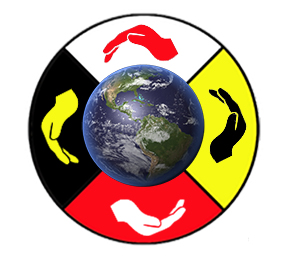Recognizing historical injustices and the importance of promoting racial justice, the RCMAR Coordinating Center at UCLA has acknowledged that our offices are on traditional lands of the Gabrielino-Tongva peoples. We have encouraged other RCMAR sites to appropriately recognize historic land rights, and we asked the Native Elders Resource Center (NERC) for a suggestion of how their institution is handling this issue. The following blog post is from a faculty member who is a colleague of the NERC faculty and scientists.
The University of Colorado – Anschutz Medical Campus is located on Indigenous peoples’ traditional and contemporary homelands. The campus resides on unceded lands of the Arapaho people, established to the Treaty of Fort Laramie in 1851. We recognize the enduring presence of more than 7,000 Indigenous peoples in Denver and roughly 40,000 living in the Denver metropolitan. The sprawling urban American Indian and Alaska Native presence in Denver consists of other tribes native to Colorado such as Apache, Comanche, Shoshone, and Ute community members yet is now home to numerous other Indigenous people from many of the 560 plus federally recognized tribes in this country.
The mission of the Colorado School of Public Health is stated as follows, “Our mission is to promote the physical, mental, social, and environmental health of people and communities.” This mission is one of stewardship, stewardship of health. The importance of said stewardship is supported and backed by numerous investments and planning.
We are currently working with local American Indian and Alaska Native stakeholders and University officials toward adopting an official land acknowledgment that we believe is linked to this mission. It is our hope that this land acknowledgment will not only pay respects to the AIAN population currently living in the Denver area but will act as a small stepping stone towards acknowledgment that the stewardship of health is inexplicably linked to the stewardship of the land, now and historically. Recognizing this relationship will afford many AIAN communities a voice to educate scholars about stewardship and health in a good way.
About the author, Dr. Jerreed Ivanich:
As a member of the Metlakatla Indian Community (Tsimshian) of Alaska, Jerreed is dedicated to health research for North American Indigenous (Alaska Native, American Indian, First Nations, Native Hawaiian) populations. Dr. Ivanich is an Assistant Professor at the Colorado School of Public Health, Centers for American Indian and Alaska Native Health, and an Adjunct Assistant Professor at the Johns Hopkins Bloomberg School of Public Health, Center for American Indian Health. His work meets at the intersections of prevention science, social network analysis, and adolescent health. Through community-based participatory research, Dr. Ivanich aims to take the knowledge and strengths of communities and put them in dialogue with the broader research field to improve public health and advance scientific methods.
if you are interested in speaking to Dr. Ivanich regarding this topic, please email Dr. Ivanich, jerreed.ivanich@nullcuanschutz.edu.

